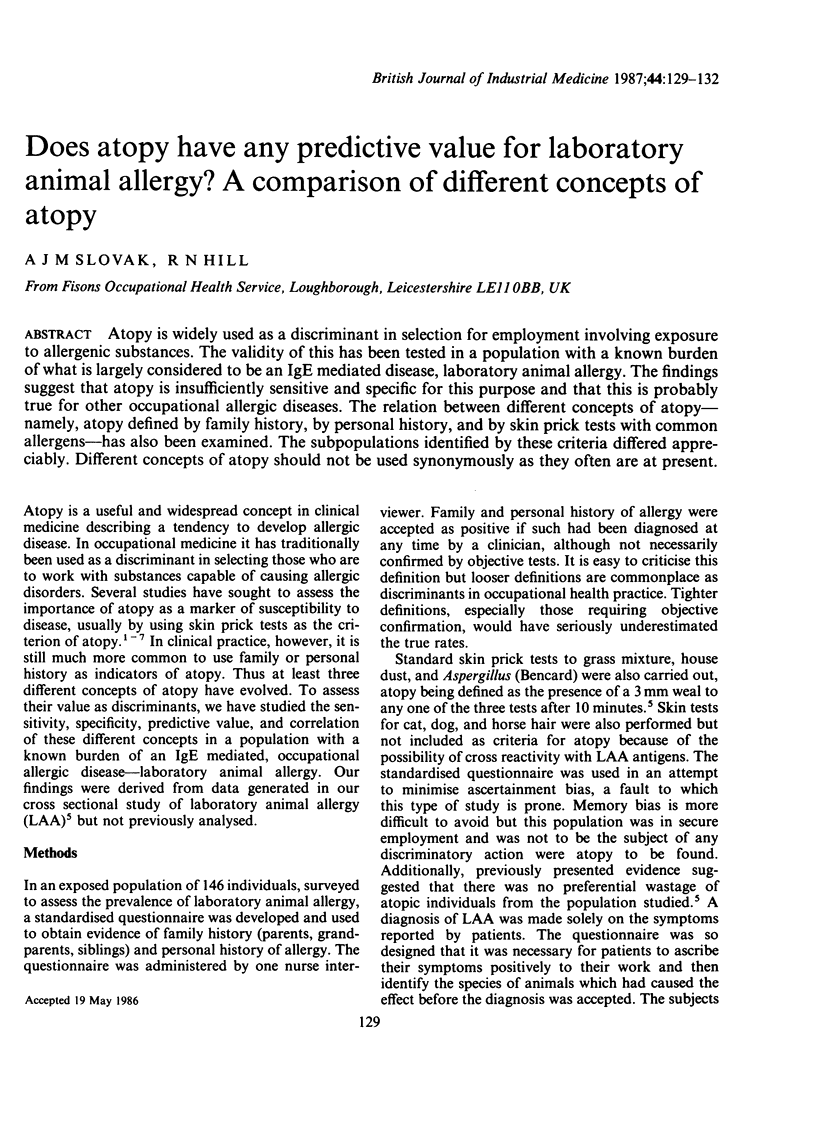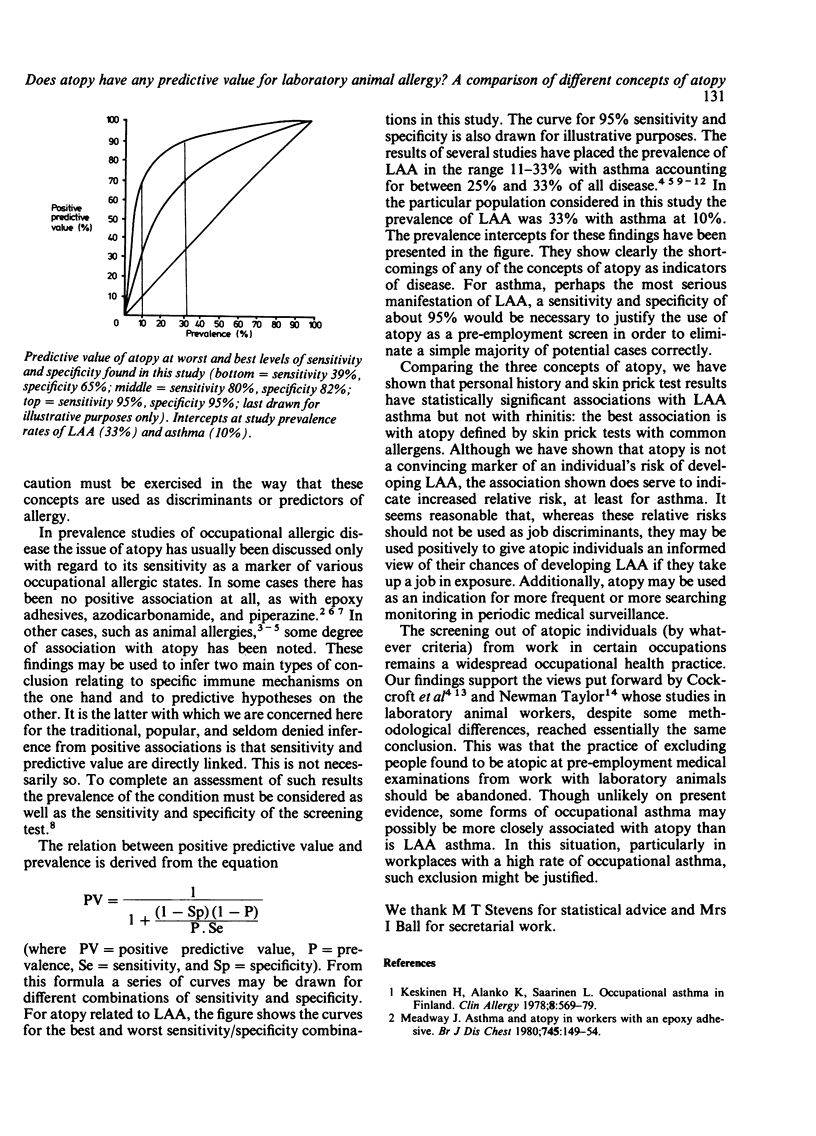Abstract
Atopy is widely used as a discriminant in selection for employment involving exposure to allergenic substances. The validity of this has been tested in a population with a known burden of what is largely considered to be an IgE mediated disease, laboratory animal allergy. The findings suggest that atopy is insufficiently sensitive and specific for this purpose and that this is probably true for other occupational allergic diseases. The relation between different concepts of atopy--namely, atopy defined by family history, by personal history, and by skin prick tests with common allergens--has also been examined. The subpopulations identified by these criteria differed appreciably. Different concepts of atopy should not be used synonymously as they often are at present.
Full text
PDF



Selected References
These references are in PubMed. This may not be the complete list of references from this article.
- Burge P. S., Edge G., O'Brien I. M., Harries M. G., Hawkins R., Pepys J. Occupational asthma in a research centre breeding locusts. Clin Allergy. 1980 Jul;10(4):355–363. doi: 10.1111/j.1365-2222.1980.tb02119.x. [DOI] [PubMed] [Google Scholar]
- Cockcroft A., Edwards J., McCarthy P., Andersson N. Allergy in laboratory animal workers. Lancet. 1981 Apr 11;1(8224):827–830. doi: 10.1016/s0140-6736(81)92693-3. [DOI] [PubMed] [Google Scholar]
- Davies G. E., McArdle L. A. Allergy to laboratory animals: a survey by questionnaire. Int Arch Allergy Appl Immunol. 1981;64(3):302–307. doi: 10.1159/000232707. [DOI] [PubMed] [Google Scholar]
- Gross N. J. Allergy to laboratory animals: epidemiologic, clinical, and physiologic aspects, and a trial of cromolyn in its management. J Allergy Clin Immunol. 1980 Aug;66(2):158–165. doi: 10.1016/0091-6749(80)90064-0. [DOI] [PubMed] [Google Scholar]
- Hagmar L., Bellander T., Bergö B., Simonsson B. G. Piperazine-induced occupational asthma. J Occup Med. 1982 Mar;24(3):193–197. [PubMed] [Google Scholar]
- Keskinen H., Alanko K., Saarinen L. Occupational asthma in Finland. Clin Allergy. 1978 Nov;8(6):569–579. doi: 10.1111/j.1365-2222.1978.tb01511.x. [DOI] [PubMed] [Google Scholar]
- Lincoln T. A., Bolton N. E., Garrett A. S., Jr Occupational allergy to animal dander and sera. J Occup Med. 1974 Jul;16(7):465–469. [PubMed] [Google Scholar]
- Lutsky I. I., Neuman I. Laboratory animal dander allergy: I. An occupational disease. Ann Allergy. 1975 Oct;35(4):201–205. [PubMed] [Google Scholar]
- Meadway J. Asthma and atopy in workers with an epoxy adhesive. Br J Dis Chest. 1980 Apr;74(2):149–154. doi: 10.1016/0007-0971(80)90026-1. [DOI] [PubMed] [Google Scholar]
- Newman-Taylor A. J. Laboratory animal allergy. Eur J Respir Dis Suppl. 1982;123:60–64. [PubMed] [Google Scholar]
- Slovak A. J., Hill R. N. Laboratory animal allergy: a clinical survey of an exposed population. Br J Ind Med. 1981 Feb;38(1):38–41. doi: 10.1136/oem.38.1.38. [DOI] [PMC free article] [PubMed] [Google Scholar]
- Slovak A. J. Occupational asthma caused by a plastics blowing agent, azodicarbonamide. Thorax. 1981 Dec;36(12):906–909. doi: 10.1136/thx.36.12.906. [DOI] [PMC free article] [PubMed] [Google Scholar]


